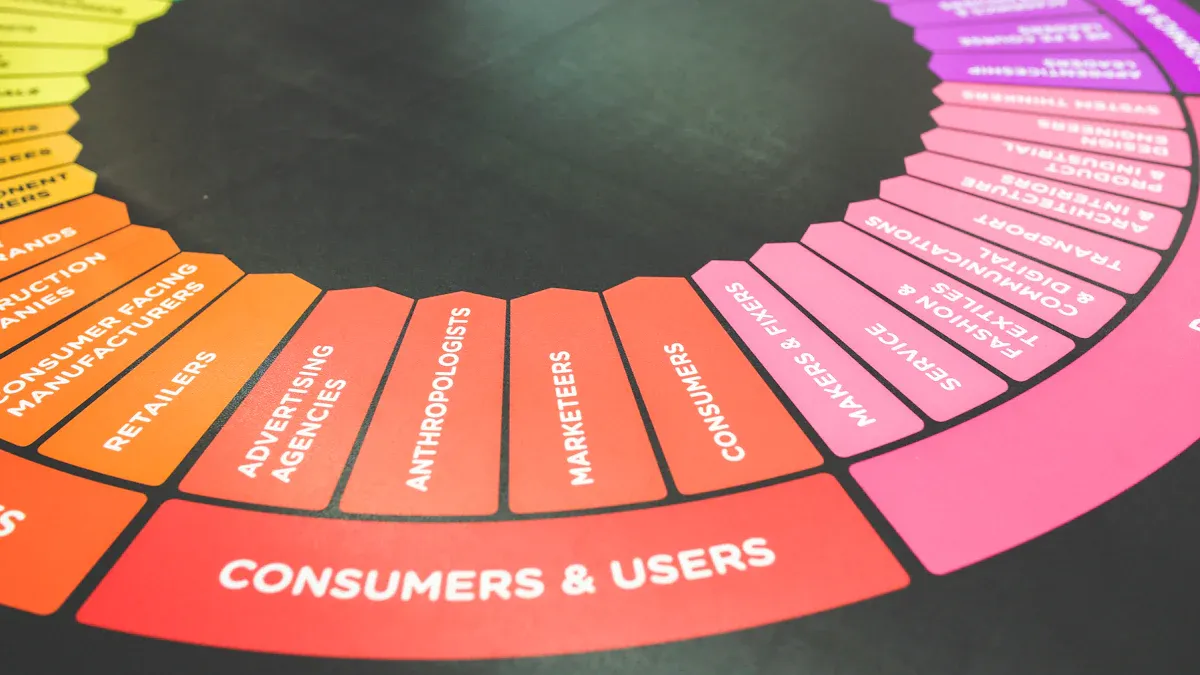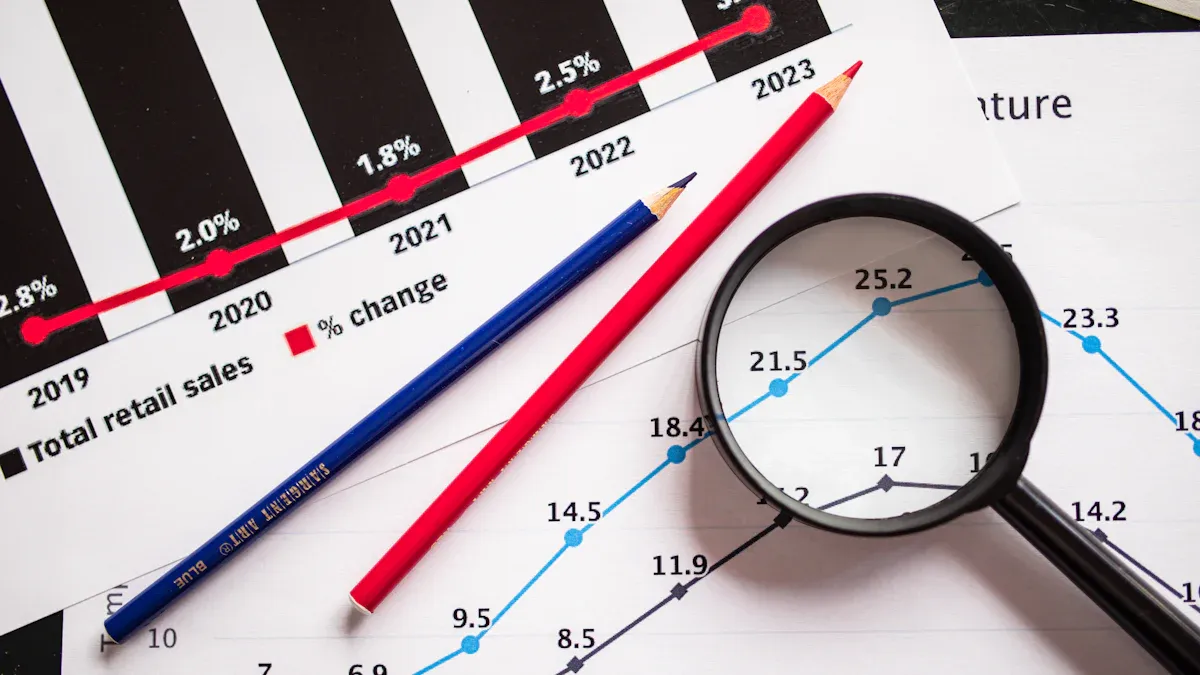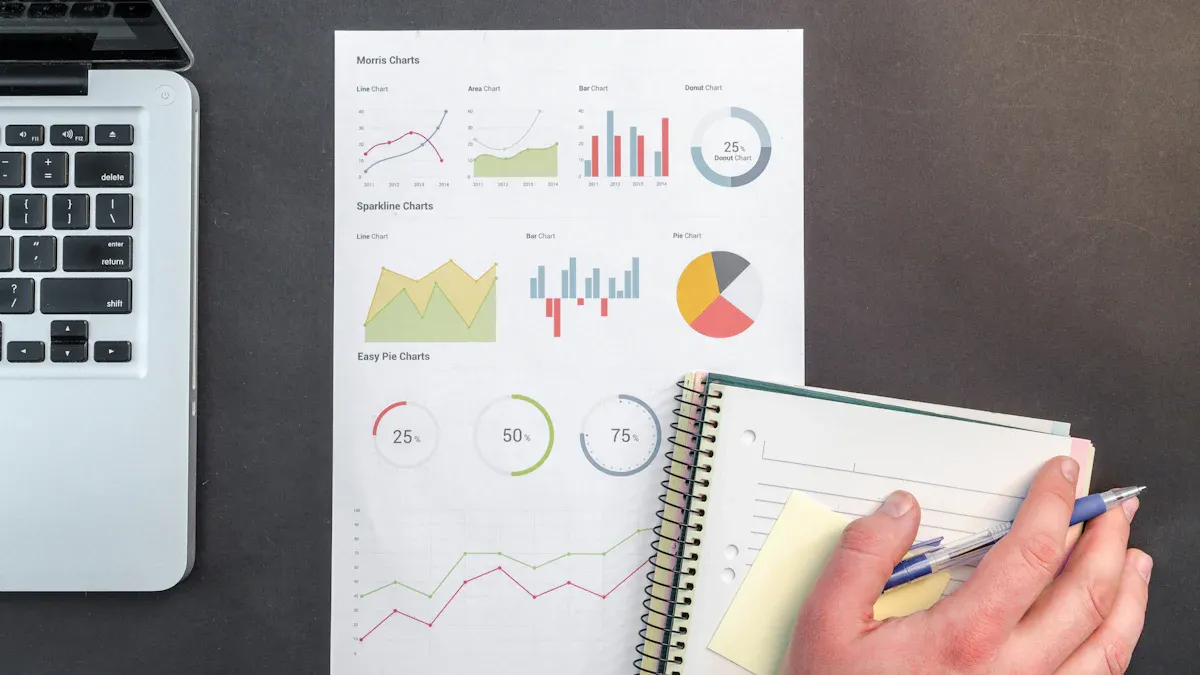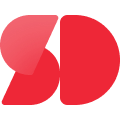Weekly Demand Forecasting Strategies for Retail

Imagine walking into your favorite store only to find that the product you need is out of stock. Frustrating, right? This is where demand forecasting becomes a game-changer for retail businesses. By predicting customer needs, you can ensure shelves are stocked with the right products at the right time.
Accurate weekly demand forecasting doesn’t just prevent stockouts. It transforms operations by reducing inventory investments by 20-30% and improving gross margins by 3-5 percentage points. Plus, it boosts inventory turnover by up to 25% and enhances perfect order fulfillment by as much as 20%. With better predictions, you can cut supply chain costs and keep customers coming back for more.
Data-driven forecasting also helps you adapt to changing trends. Historical sales data and advanced models like XGBoost and Random Forest improve accuracy, ensuring you’re prepared for both short-term shifts and long-term growth. When you get it right, you’re not just managing inventory—you’re building trust and loyalty.
Key Takeaways
Predicting weekly demand well can lower inventory costs by 20-30%. It can also raise profits by 3-5%, helping stores earn more.
Looking at past sales shows trends and seasonal changes. This helps stores have the right items when people want them.
Using live data like weather or economy updates makes forecasts better. It helps stores adjust quickly to market changes.
Teams working together can make forecasts 10-20% more accurate. This keeps everyone informed about what customers need and what’s in stock.
Checking and updating forecasts often keeps them useful and correct. This helps stores handle sudden changes in what people buy.
Understanding Demand Forecasting

What is Weekly Demand Forecasting?
Weekly demand forecasting is all about predicting what your customers will buy in the upcoming week. It’s like having a crystal ball for your retail operations, but instead of magic, you rely on data and analytics. By analyzing historical sales trends, seasonal patterns, and even external factors like weather or holidays, you can estimate demand for specific products. This helps you plan inventory levels, staffing, and promotions more effectively.
Think of it as a roadmap for your store. It guides you on what to stock, how much to order, and when to replenish. For example, if you notice that certain products sell faster during weekends, your forecast can help you prepare for that surge. Weekly forecasting isn’t just about numbers; it’s about understanding your customers’ behavior and staying one step ahead.
Here’s a quick snapshot of the metrics that define weekly demand forecasting:
Metric | Description |
|---|---|
Access to actual sales data over specific periods, helping identify patterns, trends, and seasonality. | |
Sales per category | Insights into total revenue generated for specific product categories, indicating performance levels. |
Sell-through rates | Percentage of products sold compared to initial stock levels, indicating inventory management efficiency. |
Inventory turnover | Number of times inventory is sold and replaced, reflecting how quickly products move off the shelves. |
These metrics aren’t just numbers—they’re the foundation of smarter decisions and better results.
Why is Weekly Demand Forecasting Critical for Retail?
Imagine running a store without knowing what your customers want. You’d either end up with empty shelves or piles of unsold inventory. Weekly demand forecasting solves this problem by giving you the insights you need to balance supply and demand. It’s not just about avoiding stockouts; it’s about optimizing every aspect of your operations.
When you forecast demand accurately, you can manage new product launches more effectively. For instance, forecasting helps you maintain the right inventory levels so you don’t run out of popular items or overstock slow-moving ones. It also improves your marketing promotions. By understanding what drives sales during promotions, you can plan better campaigns and maximize their impact.
Research shows that demand forecasting enhances retail processes in multiple ways. It streamlines inventory management, improves revenue margins, and even helps with dynamic pricing strategies. For example, you can adjust prices based on expected sales to maximize profits. Retailers also use forecasting to test new products in select stores, ensuring they meet customer expectations before scaling up.
In short, weekly demand forecasting isn’t just a tool—it’s a competitive advantage. It helps you stay agile, reduce uncertainty, and deliver a better shopping experience for your customers.
Challenges in Weekly Demand Forecasting
Seasonality and Promotions
Seasonality and promotions can make weekly demand forecasting tricky. You’ve probably noticed how certain products fly off the shelves during specific times of the year. Warm clothing sells faster in winter, while outdoor gear becomes a hot commodity in summer. These predictable shifts in consumer behavior are influenced by weather, holidays, and cultural events.
Historical data shows that demand for products varies significantly with the seasons.
During peak buying seasons, the average number of transactions per customer can increase by up to 30%.
Promotions add another layer of complexity. Flash sales, discounts, and marketing campaigns can create sudden spikes in demand. If you don’t account for these factors, you might end up with either too much inventory or not enough to meet customer needs.
External Market Factors
External market factors can throw a wrench into your forecasting plans. These are things you can’t control but must consider when predicting demand.
External Factor | Description |
|---|---|
Economic Conditions | Inflation and unemployment rates can affect how much people spend. |
Consumer Behavior and Preferences | Cultural trends and environmental influences can shift what customers want. |
External Factors | Unpredictable events like weather changes or supply chain disruptions can impact demand. |
For example, a sudden storm might increase demand for rain gear, while supply chain delays could limit product availability. Staying on top of these factors helps you adapt quickly and keep your operations running smoothly.
Data Accuracy and Integration
Accurate data is the backbone of effective demand forecasting. If your data is incomplete or outdated, your predictions will miss the mark. This can lead to costly mistakes like overstocking or expedited shipping fees.
Impact of Data Accuracy on Demand Forecasting | Description |
|---|---|
Reduced Costs | Accurate demand forecasting leads to lower operational costs. |
Optimized Inventory Management | Proper data accuracy helps in managing inventory levels effectively. |
Improved Customer Satisfaction | Accurate forecasts enhance the ability to meet customer demand. |
Retailers faced a combined cost of $554 billion due to overstocking in 2024. That’s a staggering number, and it highlights why accurate forecasting is critical for staying competitive and profitable.
Key Strategies for Effective Demand Forecasting

Leverage Historical Sales Data
Historical sales data is like a treasure chest for demand forecasting. It holds valuable insights into past trends, seasonal patterns, and customer preferences. By analyzing this data, you can predict future demand with greater accuracy and make smarter decisions about inventory and promotions.
For example, a chemical company reduced forecast errors by 20% using historical sales data combined with machine learning models. Even with only three years of data, they achieved significant improvements in accuracy. This shows how maintaining and leveraging historical data can transform your forecasting process.
Here’s why historical data matters:
It helps identify past trends and seasonal variations.
It provides a clear picture of consumer behavior patterns.
It improves inventory management by aligning stock levels with demand.
It informs better pricing strategies and marketing campaigns.
Retailers like Walmart have used predictive analytics based on historical data to reduce out-of-stock issues by 30%, boosting revenue and customer satisfaction. By tapping into your store’s sales history, you can uncover patterns that guide your weekly demand forecasting efforts.
Incorporate Real-Time and External Data
While historical data is essential, relying solely on it can limit your forecasting accuracy. Real-time and external data add a dynamic layer to your predictions, helping you adapt to changing market conditions.
Imagine integrating weather forecasts, economic trends, or even social media buzz into your demand forecasting model. These external signals provide critical context for predicting customer demand. For instance, during unexpected weather events, retailers can adjust inventory and marketing strategies based on real-time data, minimizing losses and capitalizing on shifting consumer needs.
Benefits of incorporating real-time and external data:
External signals improve forecasting accuracy and responsiveness.
Real-time data processing enhances systems' ability to adapt to changing conditions.
Collaboration between operations, IT, and analytics teams builds effective data pipelines.
AI-powered solutions integrate external variables, leading to fewer stockouts and less waste.
Retailers are increasingly using localized data, such as weather and events near stores, to refine forecasts down to the zip code level. This granular approach ensures you’re prepared for demand fluctuations, no matter how small or sudden.
Use Predictive Analytics and AI Tools
Predictive analytics and AI tools are revolutionizing demand forecasting. These technologies process large datasets, uncover hidden patterns, and adapt to real-time information. Unlike traditional methods, they offer a multifaceted approach to forecasting that considers both historical and external data.
Here’s how predictive analytics and AI tools make a difference:
They optimize inventory levels, reducing stockouts and overstock situations.
They enable personalized marketing by analyzing customer behavior and predicting future purchases.
They improve coordination with suppliers, ensuring adequate stock during peak seasons.
They enhance inventory management, increasing profit margins and customer satisfaction.
For example, Starbucks uses AI systems for demand forecasting to improve inventory management and reduce waste. During unexpected weather events, predictive analytics helps retailers quickly adjust inventory and marketing strategies, minimizing losses and capitalizing on changing consumer needs.
Retailers like Toyota and Procter & Gamble have also embraced AI-powered forecasting. Toyota uses demand sensing techniques to dynamically adjust production schedules, while Procter & Gamble employs collaborative forecasting models to align inventory levels and streamline order fulfillment.
By adopting predictive analytics and AI tools, you can stay ahead of demand shifts, improve operational efficiency, and deliver a better shopping experience for your customers.
Foster Cross-Department Collaboration
When it comes to demand forecasting, teamwork across departments isn’t just helpful—it’s essential. Think about it. Your sales team knows what customers want, your marketing team understands upcoming promotions, and your supply chain team manages inventory. When these departments work together, you get a complete picture of what’s happening and what’s coming next.
Cross-department collaboration breaks down silos that often keep valuable information locked away. For example, your sales team might notice a sudden spike in demand for a product, but without sharing this insight, your supply chain team could miss the chance to restock in time. By fostering open communication, you ensure everyone is on the same page, leading to better decisions and fewer surprises.
Here’s why collaboration matters:
Improved Forecast Accuracy: Teams that collaborate on forecasting achieve 10-20% higher accuracy compared to those relying only on technology. Diverse perspectives help refine predictions and account for factors one team might overlook.
Faster Market Responses: A global consumer goods company saw their data quality score jump from below 0.75 to above 0.9 after improving collaboration. This allowed them to respond to market changes faster, boosting sales and customer satisfaction.
Reduced Data Inconsistencies: A tech startup eliminated data mismatches by encouraging teamwork. This not only improved forecast precision but also impressed clients with their innovative approach.
Collaboration also helps align internal and external knowledge. For instance, your marketing team can share insights about upcoming campaigns, while your supply chain team can adjust inventory levels accordingly. This unified approach ensures promotions run smoothly and reduces conflicts caused by mismatched forecasts.
Want to make collaboration work? Start by creating regular touchpoints between teams. Weekly meetings or shared dashboards can help everyone stay updated. Encourage open discussions where teams can share their insights and challenges. When everyone feels heard, they’re more likely to contribute valuable input.
By fostering cross-department collaboration, you’re not just improving demand forecasting. You’re building a culture of teamwork that benefits your entire business. Better communication leads to smarter decisions, happier customers, and a stronger bottom line.
Best Practices for Demand Forecasting Implementation
Define Clear and Measurable Goals
Setting clear and measurable goals is the foundation of successful demand forecasting. Without well-defined objectives, it’s like trying to navigate without a map—you’ll struggle to know if you’re heading in the right direction. To make your goals actionable, focus on performance metrics that provide meaningful insights into your forecasting accuracy and operational efficiency.
Here are some key metrics to guide you:
Metric | Description |
|---|---|
Measures the difference between forecasted sales and actual sales, helping you identify areas for improvement. | |
Forecast Accuracy (FA) | Tracks how closely your predictions align with actual demand, ensuring better inventory management and cost control. |
Monthly Product Category Forecast Error (MPCFE) | Breaks down forecast accuracy by product category, helping you fine-tune strategies for specific items. |
Bias | Highlights consistent over- or under-forecasting trends, allowing you to correct systemic errors. |
To achieve these goals, consider adopting a structured framework:
Increase data quality by ensuring your data is clean, complete, and up-to-date.
Use advanced forecasting techniques that can handle multiple variables, like machine learning models.
Integrate point-of-sale (POS) data for real-time insights into customer behavior.
Collaborate across the supply chain to align forecasts with supplier capabilities.
Implement scenario planning to prepare for unexpected changes in demand.
By focusing on measurable outcomes, you’ll not only improve your demand forecasting but also enhance your overall business performance.
Regularly Monitor and Adjust Forecasts
Demand forecasting isn’t a one-and-done task. It’s an ongoing process that requires regular monitoring and adjustments. Think of it as fine-tuning a musical instrument—you need to make small tweaks to keep everything in harmony.
Continuous monitoring helps you spot discrepancies between your forecasts and actual sales. For example, if you notice a sudden spike in demand for a product, you can quickly adjust your inventory levels to avoid stockouts. This iterative approach ensures your forecasts stay relevant and accurate.
Here’s why regular adjustments matter:
They help you respond to external factors like economic shifts or competitor actions.
Real-time data analysis provides insights into changing customer preferences.
Historical sales trends reveal patterns that can guide future forecasts.
Retailers who monitor and refine their forecasts consistently see better results. For instance, analyzing peak seasons allows you to stock up on high-demand items, while adjusting for unexpected events—like weather changes—keeps your shelves stocked with what customers need.
Pro Tip: Use metrics like Mean Absolute Error (MAE) or Mean Absolute Percentage Error (MAPE) to evaluate your forecast accuracy. These tools help you measure how close your predictions are to reality, making it easier to identify areas for improvement.
By staying proactive and adaptable, you’ll not only optimize your demand forecasting but also build a more resilient retail operation.
Invest in Staff Training and Development
Even the most advanced forecasting tools won’t deliver results if your team doesn’t know how to use them effectively. That’s why investing in staff training and development is crucial. When your employees understand the principles of demand forecasting and how to leverage the tools at their disposal, they become your greatest asset.
Start by offering training sessions on the basics of demand forecasting. Teach your team how to interpret data, identify trends, and use forecasting software. For example, a retailer who trained their staff on AI-powered tools saw a 15% improvement in forecast accuracy within six months.
Here’s how you can empower your team:
Workshops and Seminars: Host regular sessions to keep your team updated on the latest forecasting techniques.
Cross-Training: Encourage collaboration between departments so employees can share insights and learn from each other.
Certifications: Support your team in earning certifications in data analytics or supply chain management.
Did You Know? Retailers who invest in employee training see a 20-30% improvement in operational efficiency. A well-trained team not only enhances forecast accuracy but also boosts overall productivity.
By prioritizing staff development, you’re not just improving your demand forecasting. You’re creating a culture of continuous learning and innovation that will benefit your business for years to come.
Start with Simple Tools Before Scaling Up
When it comes to demand forecasting, it’s tempting to dive straight into advanced tools and complex systems. But starting small and simple often leads to better results. Think of it like learning to ride a bike. You wouldn’t jump on a high-speed racing bike on day one. You’d start with training wheels, get comfortable, and then move on to something more advanced. The same principle applies here.
Simple tools, like spreadsheets or basic forecasting software, give you a chance to focus on the essentials. They help you understand the core processes without overwhelming you with unnecessary features. By starting small, you can experiment, learn, and refine your approach. This way, you’re building a strong foundation for future success.
Pro Tip: Begin with tools that your team already knows how to use. Familiarity reduces the learning curve and helps you get results faster.
Pilot programs are a great way to test the waters. Instead of rolling out a complex forecasting system across your entire business, start with one department or product category. This focused approach allows you to assess what works and what doesn’t. For example:
A pilot program lets you concentrate on core competencies rather than trying to perfect every detail.
Keeping the process simple avoids unnecessary complications, especially when engaging multiple stakeholders.
By starting small, you can identify potential challenges early on. Maybe the data integration process needs tweaking, or perhaps the forecasting model requires adjustments. These insights are invaluable when you’re ready to scale up.
Rolling forecasts are another effective strategy. Instead of sticking to rigid, long-term predictions, you can update your forecasts regularly based on real-time data. Testing this approach in a single department can reveal its impact without disrupting your entire operation. For instance:
Rolling forecasts allow you to compare their effectiveness against traditional methods.
They highlight areas for improvement, ensuring a smoother transition when you expand the system.
Starting simple doesn’t mean settling for less. It means taking a thoughtful, step-by-step approach that sets you up for long-term success. Once you’ve mastered the basics, you can confidently scale up to more advanced tools and techniques. By then, you’ll have the experience and insights needed to make the most of your investment.
Demand forecasting is your secret weapon for retail success. It helps you reduce costs, improve cash flow, and keep customers happy by meeting their needs without delays. Take a look at how effective forecasting pays off:
Metric | Description |
|---|---|
Avoiding excess inventory saves on storage costs and minimizes obsolescence. | |
Enhanced Customer Satisfaction | Meeting demand without delays increases customer loyalty. |
Minimize Stockouts | High forecast accuracy can reduce stockouts by 20-50%, boosting revenue. |
Retailers using AI-based methods like Random Forest achieve a MAPE of 8.5%, far outperforming traditional methods at 15.2%. By adopting these strategies, you’ll not only streamline operations but also create a shopping experience your customers will love. Why wait? Start forecasting smarter today!
FAQ
What is the best way to start with demand forecasting?
Start small. Use simple tools like spreadsheets or basic software to understand the basics. Focus on one product category or department first. This lets you experiment and refine your approach before scaling up.
Tip: Familiar tools reduce the learning curve and help you see results faster.
How often should I update my forecasts?
Update them weekly. Regular updates help you adapt to changes like promotions or unexpected demand spikes. Weekly adjustments keep your forecasts accurate and relevant.
Pro Tip: Use metrics like Mean Absolute Percentage Error (MAPE) to track and improve forecast accuracy.
Can small retailers benefit from demand forecasting?
Absolutely! Even small retailers can reduce costs and improve customer satisfaction with demand forecasting. Start with historical sales data and simple tools. As you grow, you can adopt advanced methods like AI.
Did You Know? Small businesses using forecasting see fewer stockouts and better cash flow.
What data is most important for demand forecasting?
Focus on historical sales data, seasonal trends, and real-time factors like weather or promotions. These provide a solid foundation for accurate predictions.
Data Type | Why It Matters |
|---|---|
Historical Sales | Reveals patterns and trends. |
Seasonal Trends | Prepares you for predictable shifts. |
Real-Time Factors | Helps you adapt to sudden changes. |
How can I improve forecast accuracy?
Combine historical data with real-time insights. Use predictive analytics tools and collaborate across departments. Regularly review and adjust your forecasts to stay on track.
Quick Tip: Cross-department teamwork boosts forecast accuracy by up to 20%.
See Also
Exploring Short-Term Demand Forecasting Techniques And Challenges
Understanding Weather's Impact On Demand: Category Insights
Transforming Data Challenges Into Opportunities: Atlas And Singdata
